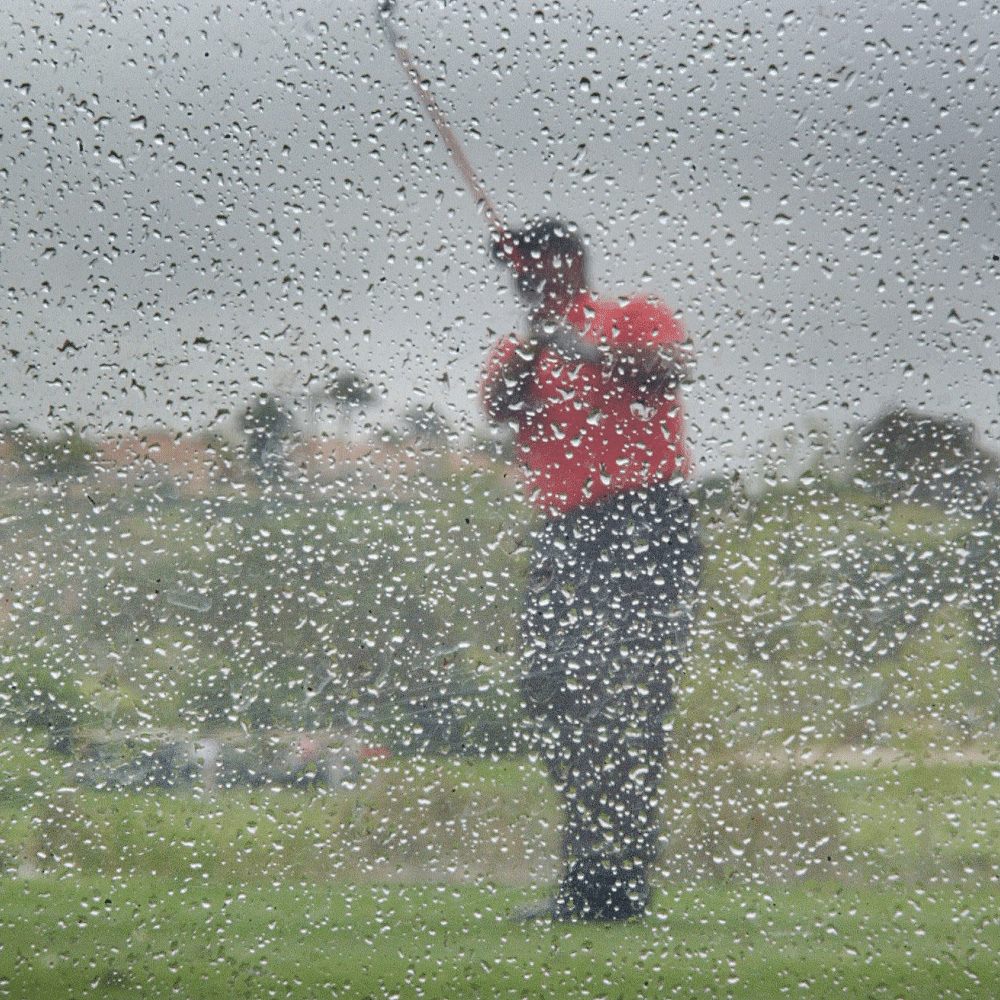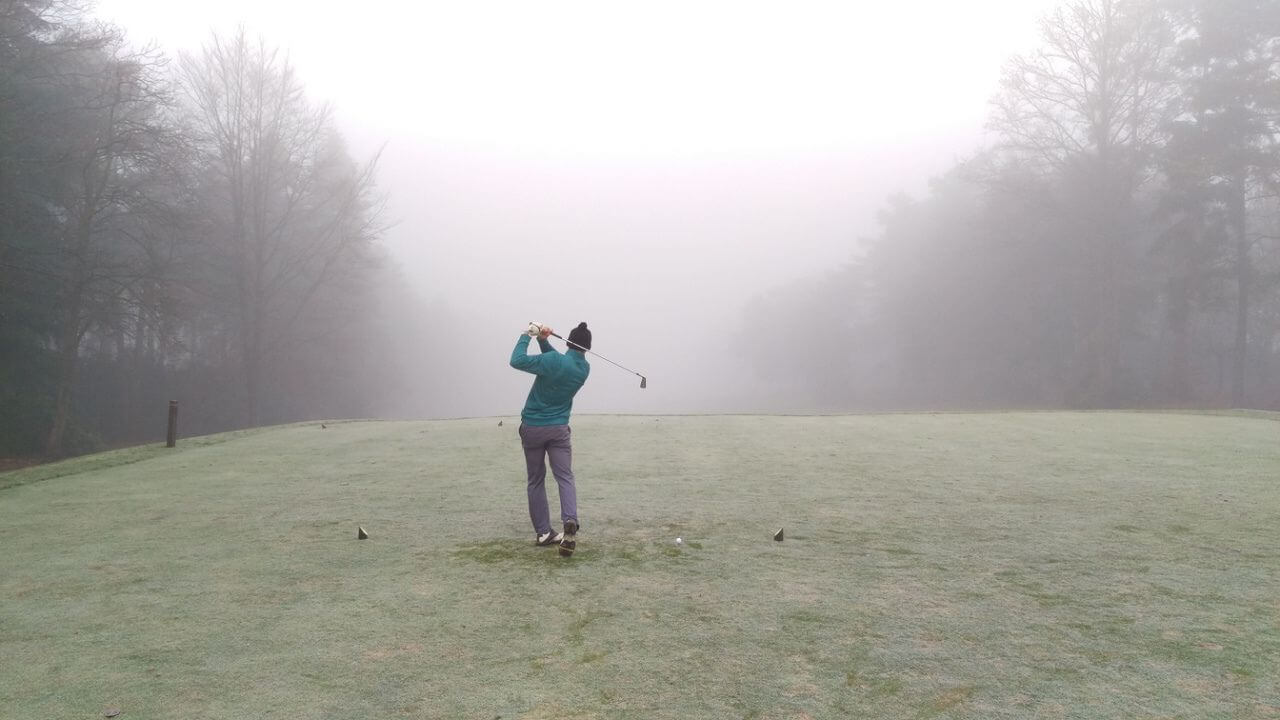Welcome to the Links Chronicles: The Golfing Adventure of a Lifetime!
Ah, Links Golf—a delightful mix of golfing history and seaside splendor, where the game's soul is interwoven with the windswept dunes and the salty sea air. Welcome, dear golfer, to our "Ultimate Guide to Golf Glory," a whirlwind tour through the birthplace of our beloved game. As we navigate the famous links of the British Isles and beyond, we'll explore the nature of Links Golf and discover how you can manage the unique challenges it presents to your game.
So, what exactly is Links Golf, you ask? Picture this: vast, open undulating landscapes accented with gorse bushes, sand dunes, and pot bunkers, where the unpredictable coastal elements become as much a part of the game as the swing of your club. The term "links" stems from the Old English word "hlinc," meaning a ridge or a rising ground, perfectly encapsulating the natural terrain of these courses. With their firm, sandy soil, rolling fairways, and persistent winds, Links courses demand a level of creativity, strategy, and adaptability that will prove a challenge and a treat to even the most seasoned golfer.
As we delve deeper into the world of Links Golf, we'll explore its storied history, the finest links courses, and, of course, the secrets to mastering the fabled bump-and-run. So, dust off your clubs and grab your best wind gear—it's time to embark on the ultimate journey to golf glory.
The Lay of the Links: Defining Links Golf
The Links Course was born on the rugged coastline of Scotland and most links golf courses can be found in the British Isles - England, Ireland, and of course the homeland. But what really defines a links course and what makes it so special? Let's find out because this is not regular golf as you know it.
Sandy Soil Soiree
A true links golf course is defined by its sandy soil. This is soil that doesn't have a lot of friends. It doesn't like farming or agriculture. And trees... what trees could survive the rolling bumpy terrain bordering the wild unpredictable sea. But it's perfect for a links-style golf course. It appreciates a wild hearty bunched-up clump of grass we like to call fescue. Oh, and it doesn't mind bent grass either. And thanks to its sandy nature it can absorb the wet weather and still provide that endless fairway roll.
So, it was this dramatic sandy coastline that came to define a links-style course. It's a stunning combination of land and sea; it brings together the wide-open natural undulating spaces of the countryside with the more challenging conditions found next to the sometimes stormy shore. Throw in some wind, sprinkle in crazy pot bunkers and sand dunes, and call it the beginning of golf.
And don't forget, we're talking about the 15th and 16th centuries when golf originated. There were not enough resources available for golf course architects to move tons of earth and carve a manicured golf course out of the landscape and bring in lush vegetation and then try to maintain it. The course architect had to work with what mother nature gave them which ultimately led to some of the most memorable courses in golf.
Giant Greens & Lazy Rolls: The Art of Lag Putting
The green of choice is bent grass. But it's the size and speed of links greens that separate them from traditional greens on other types of golf courses. It's not uncommon to find double greens when you're playing links-style golf courses. Consider this, the Old Course has 7 greens that serve two golf holes, meaning only 4 greens have 1 pin location.
And we said these greens are giant, right? Let's compare 3 iconic golf courses to truly illustrate the difference.
- The Old Course at St. Andrews: The average size of the greens is over 22,000 square feet including one green (5 and 13) that's over 37,000 square feet.
- Pebble Beach Golf Links: The average green size is approximately 3,500 square feet.
- Augusta National Golf Club: The greens average over 6,400 square feet.
Now, when it comes to speed true links golf courses have notoriously slower greens. This is another way to combat the howling winds Mother Nature can throw at you on the course. After all the ball does need to come to rest on the green.
With greens this size it makes sense that they follow the bumpy-contoured nature of the course. This can prove a challenge for inexperienced golfers who have to navigate hundred-foot putts over hollows and humps and a generally uneven putting surface.
In the Pits: The Perils of Pot Bunker Madness
In today's world of pristine golf courses, players are rewarded with near-perfect conditions - manicured fairways that look like greens, flawless super smooth greens, and perfectly maintained bunkers. In fact, sometimes if you miss the green you'd rather be in the bunker for your up and down.
But when it comes to playing links golf beware of the pot bunker. This is truly a hazard. These bunkers are small deep holes or craters shaped like circles. They have steep faces and sometimes need a ladder to climb in and out of them. But climbing in and out is the easy part - hitting out of them is another story. Often you're only choice is to hit out sideways or even behind you because the front face is just too steep.
You'll find these penal bunkers strategically located along the fairways and greenside too. If you're playing golf on a true links course for the first time check the scorecard before you tee off on a particular hole. You want to be aware of where the pot bunkers come into play because often times you may not be able to see them from the tee box.
Swing Through the Ages: A Brief History of Links Golf
Born on the coastal sand dunes of Scotland, links golf traces its roots back to the 15th century when golfers of yesteryear first ventured out to conquer the links land and natural undulations of the terrain. Little did they know that their passion for the game would give rise to a uniquely captivating form of golf that would endure for centuries to come.
When we look back at the history of golf there's one constant - the meaning of words and golf terms evolve and change over time. Take bogey for example, a term that was used to define Par - an expert golfer was called a bogey golfer. Today that term represents a score of one over Par with par replacing bogey as the standard score on each hole.
Originally the term 'links' defined any rough grassy area between the sea and the land. As we stated earlier, the word is derived from the Anglo-Saxon word 'hlinc', of about 931 AD. The word means ridge or hill - the rising ground found on sandy dunes next to the Sea. The word links would evolve to denote any common grassy area. Today when we talk about links we are referring to golf and links-style courses.
Over the years, links golf has evolved, refining its charm and character while staying true to its origins and the links land where it was born. As the sport spread across the British Isles and beyond, it garnered a devoted following of golfers eager to test their mettle against the most challenging of nature's courses, which have now become legendary. From the iconic St. Andrews Old Course to Royal Dornoch, these hallowed grounds have witnessed the rise of golf's greatest champions and the birth of unforgettable moments in the annals of the sport.
Here are some interesting numbers about true links golf courses.
- Surprisingly only 247 true links courses remain in the world.
- The British Isles is home to over 200 true links courses.
- The Home of Golf boasts just over 90 true links courses. However, that's less than 20% of the total number of courses in Scotland.
- There are only 4 maybe 5 true links courses in the US.
Links Lovers' Logic: The Passion Behind Links Golf Courses
So why do people love links golf so much? For many, it's the pure, unadulterated challenge that these courses present. The unpredictable nature of the terrain and the ever-changing weather conditions require the ultimate test of a golfer's ability. You need to exercise creativity, strategy, and a whole lot of patience. Links golf is often seen as a return to the sport's roots, offering a more authentic and traditional experience that harkens back to the early days of golf. Days long before metal woods and 4-piece golf balls.
Technology and athleticism have changed the game of golf. Today's modern golfer is bigger, stronger, and fitter. Combine that with a modern golf ball that keeps pushing the envelope and you get a power game that is making traditional old-school courses obsolete. No wonder the USGA and R&A are considering reigning in the golf ball for Professionals.
This is the beauty of Links golf and why it is so beloved. Most links courses tend to withstand the test of time. They remain as relevant today as they did when they were first designed. They represent the ultimate challenge where nature forces players to play golf and the course the way it was played centuries ago.
The Links Bucket List: Must-Visit Courses
Now it's time to have some serious fun and create the ultimate list of the best Links Golfing Experiences. But before we send you on your way, let's quickly define the other types of golf courses.
The Most Famous Parkland Course
Parkland golf courses are inland courses featuring lots of trees, man-made hazards, and lush manicured fairways and greens. The Parkland Golf Course is probably the most popular style of golf course in the US as most traditional courses are built this way. If you watch PGA tour events you'll see Parkland courses all day long. Augusta National is debatably the most recognized parkland course and one of the most famous Parkland golf courses.
Desert Golf Courses:
A desert golf course is a type of golf course designed and built in a desert environment. Desert courses are specifically tailored to the unique landscape and climate conditions found in desert regions, such as low rainfall, extreme temperature fluctuations, and sandy soil. Desert golf courses often incorporate the natural desert terrain and vegetation into their design, with features like native plants, cacti, and rocky outcroppings. If you've watched a desert golf tournament you can appreciate the unique look of what sometimes can be considered target golf.
Heathland Courses: Linking Without The Sea
A heathland golf course is a type of golf course built on open land that is characterized by heather, gorse, and other low-growing vegetation. It almost wants to be a links course because it shares many of the same characteristics but it's not in a coastal location. Originally they had very few trees and what they had was usually pine trees. These are usually classic British courses. A brilliant example is Sunningdale Golf Club.
Stadium Courses: Where The Fans Go Wild
Have you ever watched the Phoenix Open? Or played a TPC course? These are courses for big PGA events that are designed for thousands of spectators.
Ready for the Best of Links Golf - here we go (in no particular order)!
- The Old Course at St Andrews Links, Scotland
- Royal County Down, Northern Ireland
- Murfield, Scotland
- Ballybunion, Ireland
- Royal St. Georges, England
- Royal Dornoch, Scotland
- Carnoustie, Scotland
- Bandon Dunes Golf Resort, USA
- Royal Port Rush, Northern Ireland
- La Hinch, Ireland
- Royal Birkdale, England
The Links Golf Cheat Sheet: Your Guide to Links Mastery
Ready to tackle the wild world of links golf? Before you head to the course we've got a few pointers for you.
- The Lower the Better - Control your distance on the ground with a low lofted club - use the firm rolling contours of the land to get to the hole.
- Master the Bump and Run.
1. Set Up: Use your putting stance. Position the ball back in your stance. Make sure the club is more vertical just like if you were putting. For some, choking up on the club may be helpful.
2. The Stroke: The theme is putting, so use a similar stroke. Use a simple back-and-forth motion keeping your hands ahead of the club and your wrists out of it.
3. Minimize The Spin: Hit the ball closer to the toe of the club. This will reduce the backspin, keep the ball lower, and allow the ball to roll out to the hole.
4. Distance Control: Remember, we're using a putting motion. If you need to hit it further add some arc to your stroke.
- Super Long Putts - Don't be afraid to break your wrist to generate the distance you need. When you're picking your line look to a larger area on the green instead of trying to putt to the perfect line.
- Slow and Easy - When you're teeing off into the wind take it easy - a smooth easy tempo will lower the ball spin and keep the ball flight down.
- Patience, Patience, and more Patience - enough said. Stay in the moment... Be thankful for the lucky bounce and accept the unlucky bounce.
- Divotless Iron Play - Try to pick the ball clean. This will reduce the spin and keep the ball from being hostage to the wind.
- Have Fun - Play what the course gives you. Appreciate the history.
The 19th Hole: Concluding Our Links Golf Adventure
And there you have it golf fans – the ultimate guide to links golf glory! From the intriguing history and the breathtaking famous Scottish courses to the tips and tricks that'll set you on the path to success, we've covered it all. Now that you're armed with the knowledge and the passion for links golf, it's time to hit the course and experience the thrill for yourself. Remember, the key to conquering the links lies in embracing the challenge, staying patient, and enjoying the moment.
Thanks for visiting. We can't wait to see you again!
"Keep it in the short grass"
Joseph
If you're ready for true Links Golf you need the right gear - no questions asked!








How about some cool fashion?
















Member discussion